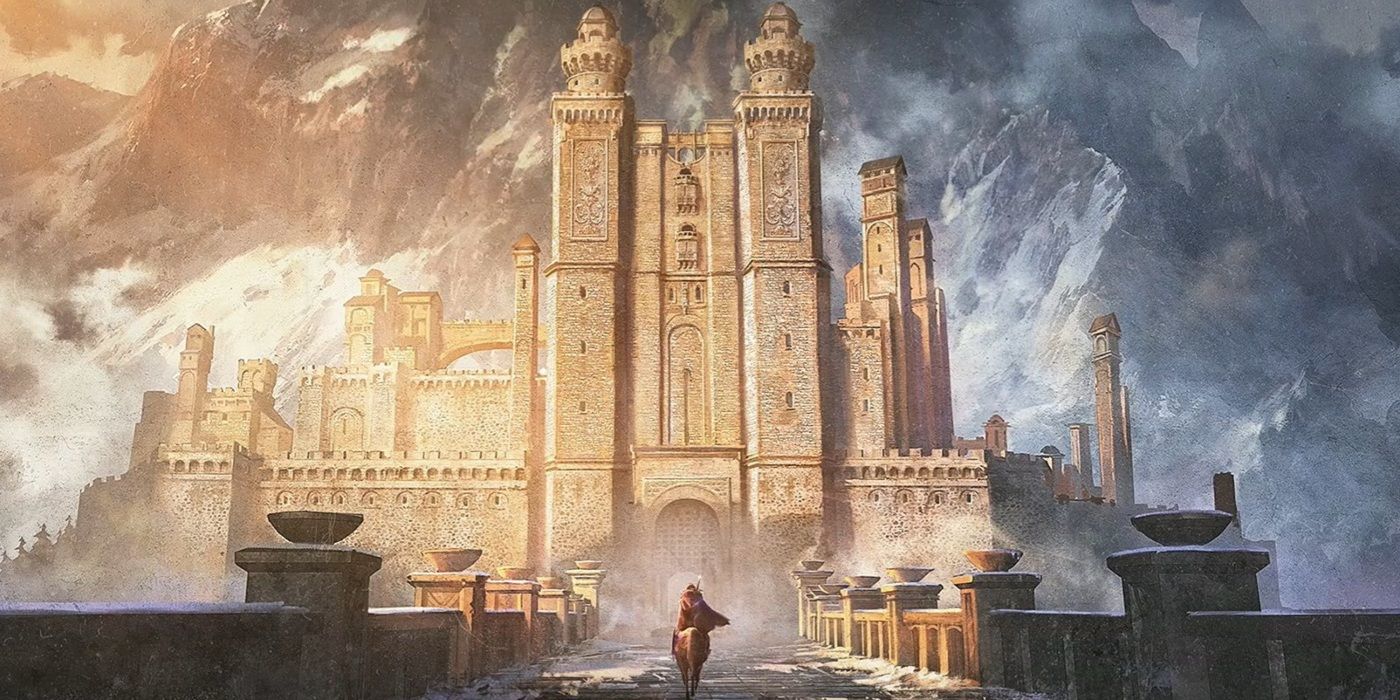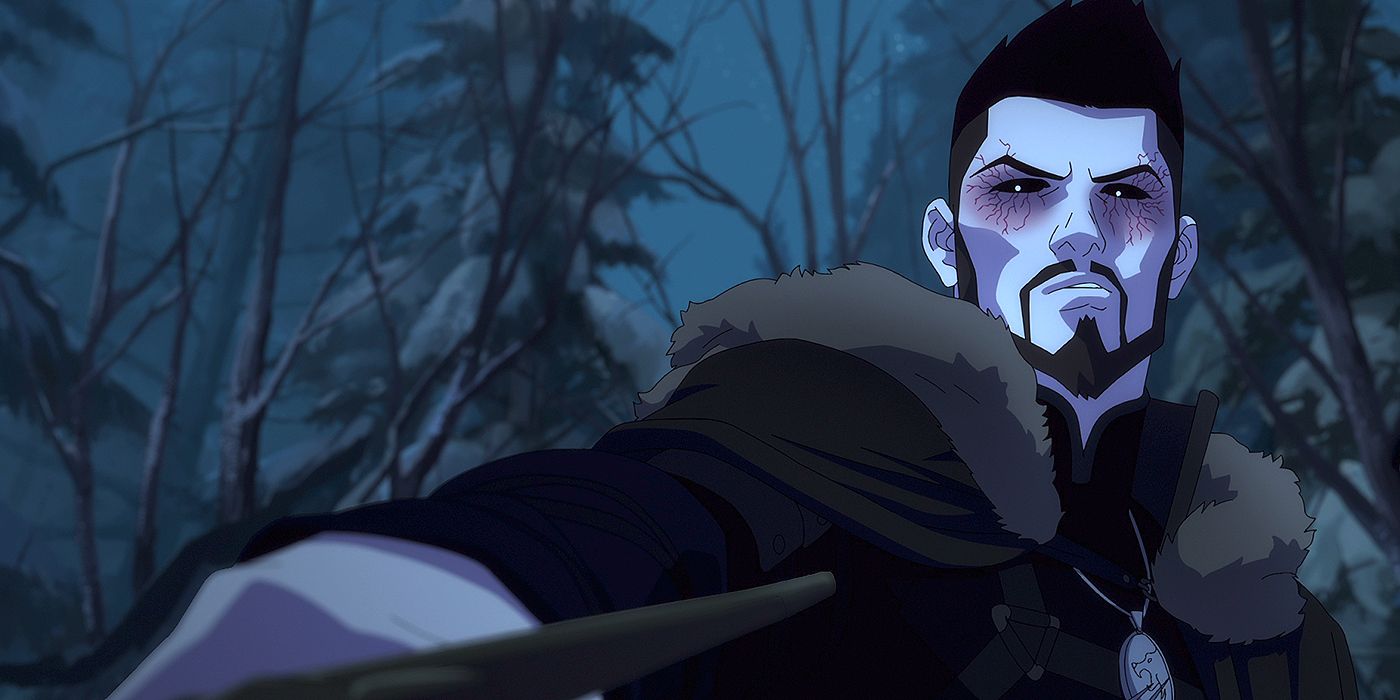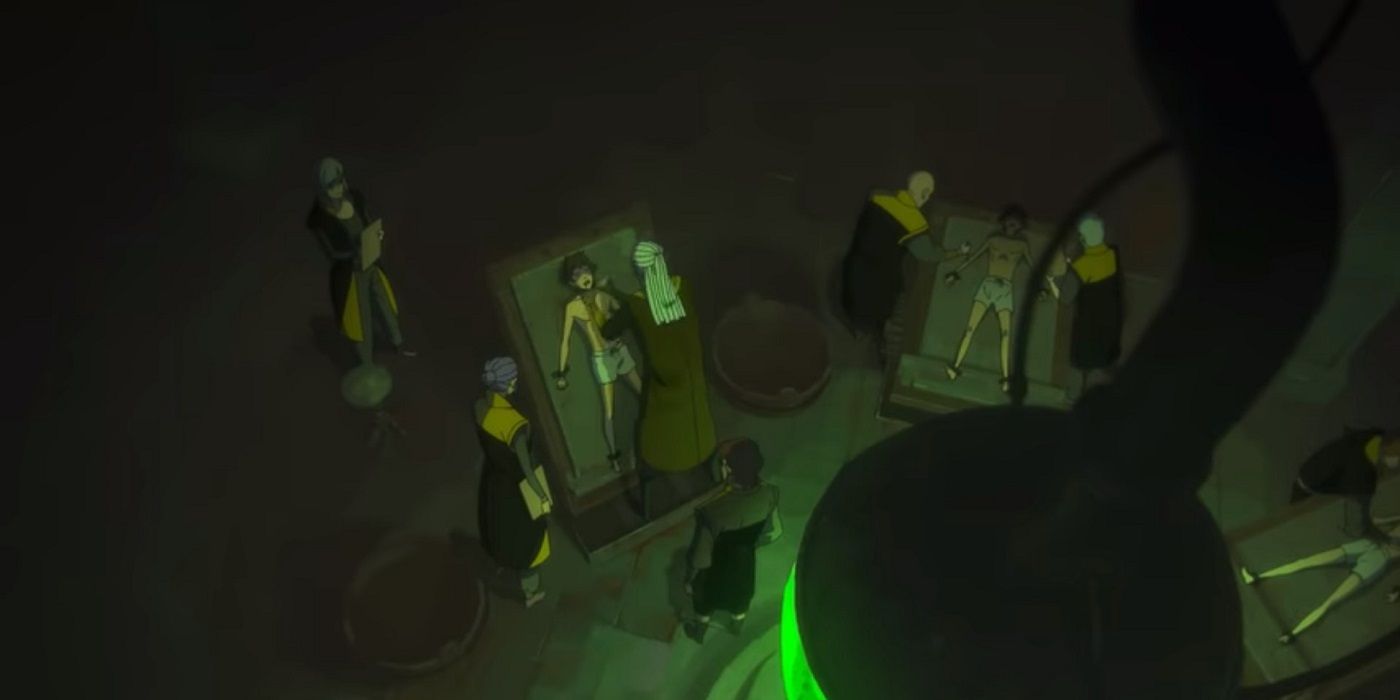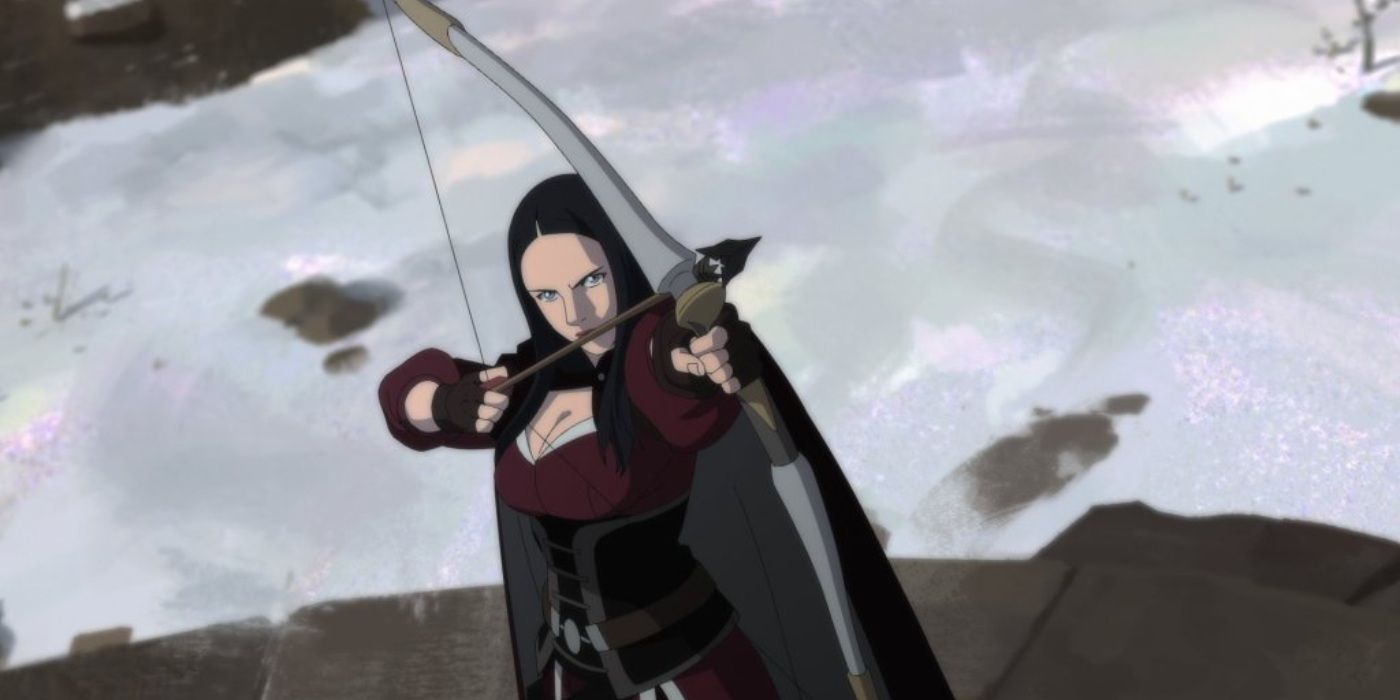
WARNING: The following article contains major spoilers for The Witcher: Nightmare of the Wolf, streaming now on Netflix.
Netflix's The Witcher: Nightmare of the Wolf does not bridge the events of The Witcher Season 1 and 2, per se. Rather, it provides background and context for Vesemir and Kaer Morhen, which are both set to appear in the live-action series when it returns this year. Longtime fans will know that Netflix's show takes liberties with the source material, to the point that it isn't always faithful to the lore of Andrzej Sapkowski's fantasy world.
The Witcher: Nightmare of the Wolf, on the other hand, explores an era in the Continent's history that Sapokwski's novels only ever mention, with few details ever provided as to the how and the why of certain events. Nightmare of the Wolf writer Beau DeMayo explained to CBR that the lore was always paramount during the writing process, saying, "That was very important to me, that this feels like something that is always bowing at the altar of what Sapkowski created." And audiences can see hints of that in several ways throughout the anime feature film.

Before delving into how it stays faithful to the lore, it is important to recap everything the franchise has already given fans in terms of information. Sitting high in the mountains of Kaedwen, Kaer Morhen is an ancient keep that first appeared in Sapkowski's Blood of Elves, though there is mention of it in The Last Wish, which, though set long before, was published afterward. The home of the School of the Wolf is described as a fortress in ruin, following events that occurred long ago in response to the ever-present conflict between magic, mutants, and humans -- especially the humans that populate the Northern Kingdoms. There are a handful of witchers left at Kaer Morhen -- Eskel, Lambert, Coën, and their mentor and Vesemir -- who are all introduced in Blood of Elves when Ciri and Geralt return there for the winter.
In the novels, there is some speculation that Vesemir might be older than Kaer Morhen itself. However, despite his age and involvement in the School of the Wolf, he does not possess the knowledge of the Trial of the Grasses necessary to create more witchers. That knowledge was lost when Kaer Morhen fell, and its mages were slaughtered. Vesemir was only a fencing instructor back then, not privy to matters relating to magic and alchemy.
All of these details line up with what Netflix presents viewers in Nightmare of the Wolf. Vesemir's story began long ago in a small town in the Northern Kingdoms. The son of a noble house servant, Vesemir longed to explore the world and create a life for himself resembling the luxury that his masters appeared to enjoy.
When one of his masters was possessed by a demonic mahr, Vesemir was introduced to the witcher profession and tempted into it by Deglan from the School of the Wolf. He underwent brutal training, endured the agony of the Trial of the Grasses, and emerged a powerful young witcher, tasked with training the next batch of witchers in combat. But he was left in the dark when it came to the work of the fortress' mages -- the creation of the Trial of the Grasses and the hideous hybrids meant to ensure the witchers' continued existence. However, he went on to play a pivotal role when the people of Kaedwen laid siege to the fortress in retaliation for what some of those mages and witchers had done.

The Witcher: Nightmare of the Wolf does invent a few things, such as the witchers' involvement in the appearance of certain monsters, the involvement of a powerful elf in the sacking of Kaer Morhen, and Vesemir's role in the fortress' defense, but it doesn't actually stray too far from Sapkoswki's novels.
Netflix's anime tie-in shows witchers creating hybrids in order to stave off the dwindling number of monsters left behind by the Conjunction of the Spheres, and in so doing, ensuring their own survival as a people. As Deglan explains to a distraught Vesemir, "The only thing that keeps men from hunting us are the scarier beasts we keep away." It is the ever-present theme of the greater and lesser evil, wrapped in a tale that fits comfortably into the history Sapkowski's Blood of Elves hinted at.
Not much is known about who the assailants were, other than the fact that the mob that tore the fortress down was comprised of fanatics from across Kaedwen. It is believed that they had the help of mages -- after all, how could a mob of angry peasants, or even knights, best a fortress full of professional monster slayers? Monster slayers that were mutated and trained in the use of magical spells, albeit relatively minor ones. The sorceress Tetra's involvement also fits the lore comfortably, though perhaps not accompanied by the elven commander of monsters.
That is one invention that may not fit in with the lore, however. The people of the Northern Kingdoms have never been welcoming when it comes to magic, and, while it is possible they would have agreed to be aided by a sorceress, the people, as described by Sapkowski's novels, are unlikely to have ever agreed to fight alongside monsters.

Other than that deviation from the novels, The Witcher: Nightmare of the Wolf -- though predominately a tie-in faithful to the world of the Netflix adaptation -- fits into the fantasy world Sapokwski created for readers in his novel series. It never strays too far and, as DeMayo hoped, appears to be a wonderful homage to the Polish fantasy author and a treat for fans of The Witcher.
To see how the anime film ties into Sapokwski's novels, The Witcher: Nightmare of the Wolf is streaming now on Netflix.
0 Comments